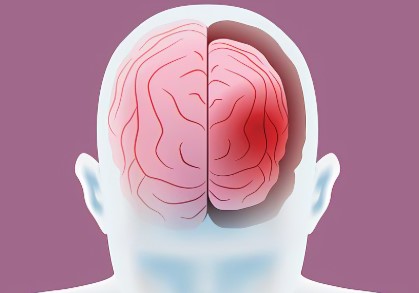The metabolic countdown: Scientists identify a critical window to halt accelerated brain aging
10/18/2025 / By Willow Tohi

- Brain aging is not a steady decline but accelerates sharply during a “critical window” in midlife, typically between the ages of 40 and 60.
- The primary driver of this decline is neuronal insulin resistance, which prevents brain cells from efficiently using glucose for fuel.
- Ketones, an alternative fuel source, can bypass this insulin resistance and help stabilize brain networks when introduced during this critical period.
- Lifestyle interventions focused on metabolic health—such as diet, exercise and sleep—are most effective when implemented before significant neural damage occurs.
- This research underscores that future cognitive health is significantly influenced by lifestyle choices made in middle age, rather than being predetermined by genetics.
For decades, the slow fade of memory and mental sharpness was accepted as an inevitable tax of growing older. Now, groundbreaking research is rewriting the narrative of brain aging, revealing it is not a gradual slope but a process with a critical, accelerated phase in midlife. A confluence of new studies indicates that the brain’s aging process sharply accelerates around a person’s 40s and 50s, creating a pivotal window for intervention. This discovery, driven by large-scale brain imaging and molecular analysis, points to metabolic health as the central lever for preserving cognitive function, suggesting that the steps taken today could decisively shape the brain’s resilience for decades to come.
The midlife brain shift: From stability to instability
The traditional view of a steadily aging brain is being upended by data. Researchers analyzing functional MRI scans from over 19,000 people discovered that the brain’s neural networks begin to destabilize significantly around age 44, a process that peaks near age 67 before plateauing in later life. This instability means different regions of the brain struggle to communicate efficiently—a hallmark of cognitive decline. This finding aligns with a separate, deep molecular study from Stanford Medicine, which analyzed tens of thousands of biomarkers and found that the human body undergoes its most dramatic nonlinear changes not in old age, but during two key periods: the mid-40s and the early 60s. In the 40s, these changes include reduced efficiency in metabolizing fats and signs of increased cardiovascular risk, providing a physiological backdrop to the observed brain network disruption.
The culprit: When the brain’s fuel system falters
The critical question became what mechanism is driving this midlife brain shift. The evidence consistently points to one primary suspect: neuronal insulin resistance. The brain is an energy-intensive organ, consuming up to 20% of the body’s fuel. When brain cells become less sensitive to insulin, they struggle to absorb their primary energy source, glucose. This creates a state of metabolic stress, leaving neurons starved for energy and more vulnerable to damage. Genetic analysis further supports this, showing that brain areas most vulnerable to aging are also those richest in insulin-dependent glucose transporters. This metabolic explanation reframes cognitive aging from a mysterious, predetermined fate to a process intimately linked to the body’s overall metabolic health, similar to conditions like Type 2 diabetes.
A window of opportunity and a source of hope
The most promising aspect of this research is the identification of a “critical window” for intervention. Scientists found that providing the brain with an alternative fuel—ketones—could effectively restabilize aging neural networks. Ketones can bypass the insulin-resistant glucose pathway, offering neurons a clean and efficient energy source. Crucially, this intervention was most effective between the ages of 40 and 60, a period when the brain’s energy systems are “bending before they break.” After significant neuronal damage has accumulated, the same interventions yield diminishing returns. This underscores a powerful, proactive approach to brain health: The time to act is before severe symptoms emerge. This aligns with the growing understanding that pathologies like Alzheimer’s disease begin their silent progression in the brain decades before diagnosis.
Rewriting the future: Lifestyle as the first line of defense
This new science carries a profound implication: genetics is not destiny. Less than 1% of Alzheimer’s cases are caused by deterministic genes; for the vast majority, risk is shaped by lifestyle. The midlife metabolic crisis presents a targetable vulnerability. While a strict ketogenic diet is one method to elevate ketones, sustainable lifestyle strategies can powerfully support the brain’s metabolic flexibility and health.
- Dietary strategy: Focus on balancing blood sugar by building meals around protein, fiber and healthy fats.
- Embrace metabolic flexibility through practices like intermittent fasting or occasional low-carb meals.
- Consistent movement: Regular exercise, especially strength training and zone 2 cardio, improves insulin sensitivity throughout the body, including the brain.
- Foundational health: Prioritizing quality sleep and managing chronic stress are non-negotiable, as both poor sleep and chronic stress directly impair glucose metabolism and accelerate brain aging.
What you can do: Be proactive
The emerging message from the frontiers of neuroscience and longevity research is one of empowered agency. The aging of the human brain, long a source of fear and fatalism, is now revealing its secrets—and they are deeply metabolic. The identification of a critical midlife window transforms brain health from a reactive concern of old age to a proactive priority of middle age. By understanding that the brain’s future is profoundly influenced by the metabolic choices made today, individuals can seize the opportunity to invest in their cognitive resilience, ensuring that a longer life is also a life filled with clarity, connection and mental vitality.
Sources for this article include:
Submit a correction >>
Tagged Under:
aging secrets, Brain, brain fuel, brain function, discovery, fight obesity, insulin resistance, longevity, mental, metabolic resilience, mind, mind body science, prevent diabetes, prevention, research
This article may contain statements that reflect the opinion of the author
RECENT NEWS & ARTICLES
COPYRIGHT © 2017 DIABETES SCIENCE NEWS




















